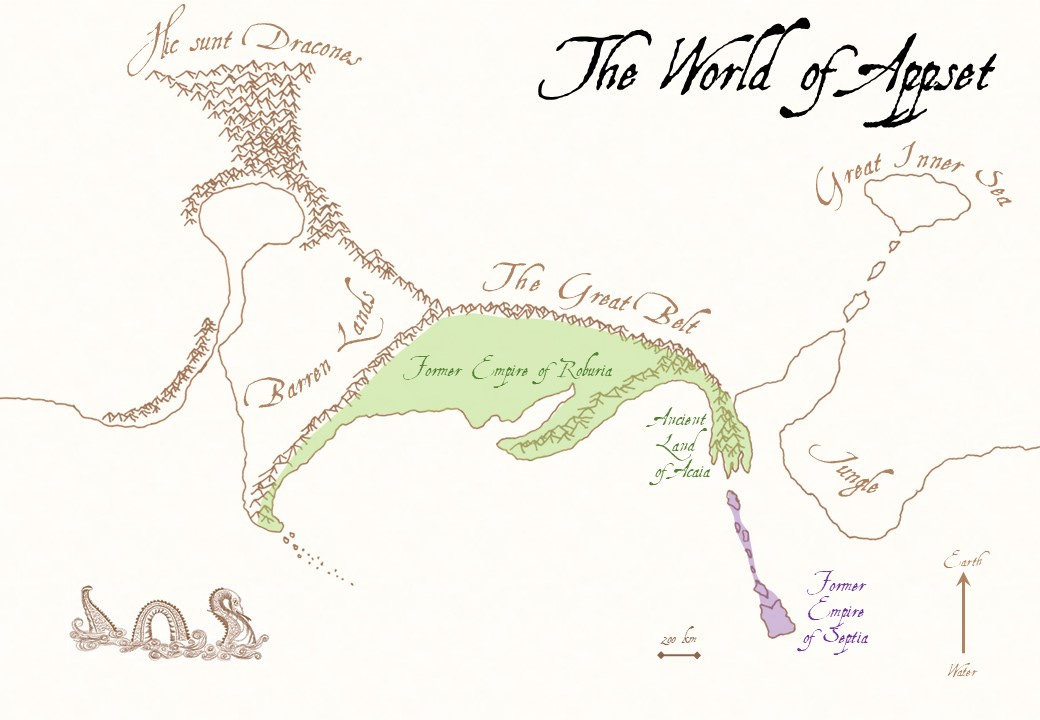The civilized lands within the Great Belt were once part of an ancient empire that, for centuries, ruled all territories with unity. More detailed descriptions of the history and geopolitical development will be provided later, but for now, it’s important to give a general overview of these lands as an introduction.
The civilization of Roburia managed, over the centuries, to develop from the city of Robur in the peninsula known as Spiked Talon, expanding to unite all the territories enclosed by the Great Belt, from The Sting to The Hand of God, under a single empire. The expansion of this civilization occurred through military conquests, more or less violent, and also thanks to the model of annexing conquered peoples into Roburian civilization. A key element is the body of laws and traditions adopted by Roburia, a legacy of Philodemos, the greatest intellectual these lands ever knew. Regarding the thought of Philodemos, it’s enough to say that thanks to this philosopher, several fundamental principles of civil coexistence were accepted and introduced, such as respect for the individual, the rejection of slavery, and the concepts of sharing and ownership.
To be fair, Philodemos was a figure with origins different from those of Roburian civilization: before the rise of the Roburian Empire, the civilization of Acaia thrived, a state that was formed under the leadership of Philodemos in the peninsula known as The Hand of God. This civilization was established thanks to the Palingenesis, the socio-political activity carried out by Philodemos: the main tribes inhabiting The Hand of God accepted the precepts and teachings of Philodemos, and through them, this population rose above others, imposing its cultural and political superiority on the surrounding lands. Thus, many colonies were founded around Acaia. One of these developed in the peninsula of Spiked Talon and grew to the point of controlling the entire area: the city of Roburia began as a colony and expanded to become an empire that eventually subjugated Acaia itself, its “political mother.” The empire grew over the centuries, incorporating all the cultures within the Great Belt: the maximum extent of the Roburian Empire included all territories from The Spike to The Hand of God.
Similarly, the former colony of Septia, after a few centuries, separated from the “motherland” Acaia and became an independent nation: the strength of Septia lay in maritime trade, which allowed it to expand its commerce to the borders of the known lands, to the Great Inner Sea in Post-Earth and the Forgotten Sea in Pre-Earth. Unlike Roburia, the empire of Septia grew in a different way, rejecting the principles of Palingenesis and relying solely on the economic strength provided by the flourishing trade ensured by Septian ships. In this way, Septia embraced principles such as slavery, the idolization of wealth and power, and was able to grow based on values that were diametrically opposed to Philodemos’ Palingenesis.
What happened in the centuries between the two empires is well known in all historical annals and will be extensively illustrated when the history of these lands is told…





